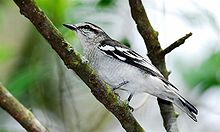In trying to understand evolution better, I have been looking at examples of speciation, and have thus come across the topic of ring species. I have tried to find concrete examples of how these work, but have been unable to. This paper deals with one of the frequently quoted examples of ring species, but concludes:
In conclusion, although ring speciation is theoretically possible, the few well-studied examples suggest that it occurs infrequently, because the dynamics of species’ ranges are more likely to result in fragmentation, i.e. periods of allopatry, before the slow process of isolation by distance leads to sufficient divergence to allow for circular overlap.
The paper does, however, cite an article on a bird that appears to be a strong example of a ring species, but buying access to it is more expensive than a year´s supply of toilet paper.
Is there hard evidence that ring species exist? And if so, what is the evidence and what does it teach us about the nature of speciation?






